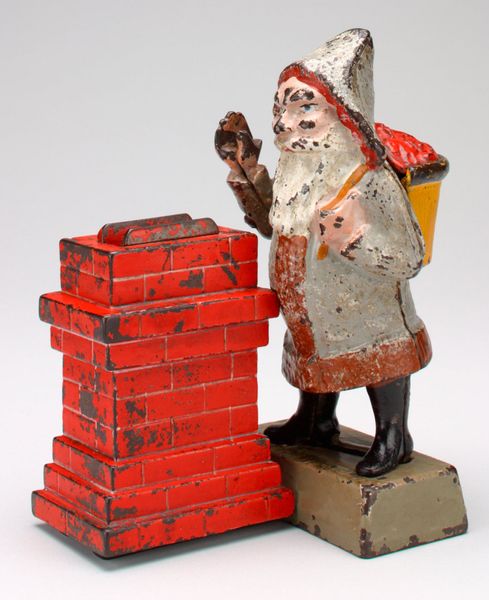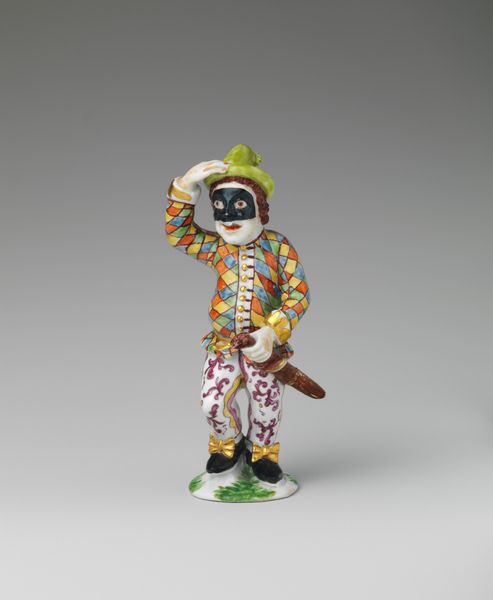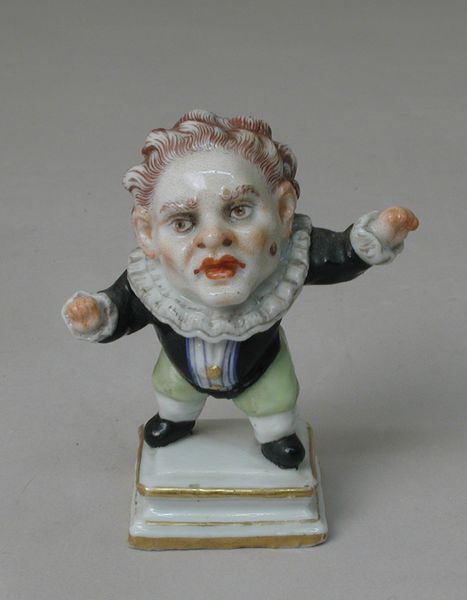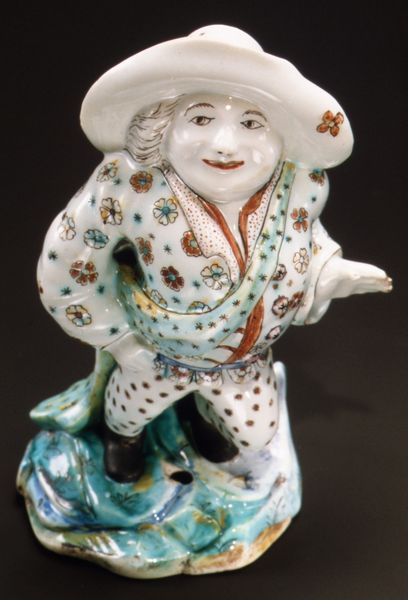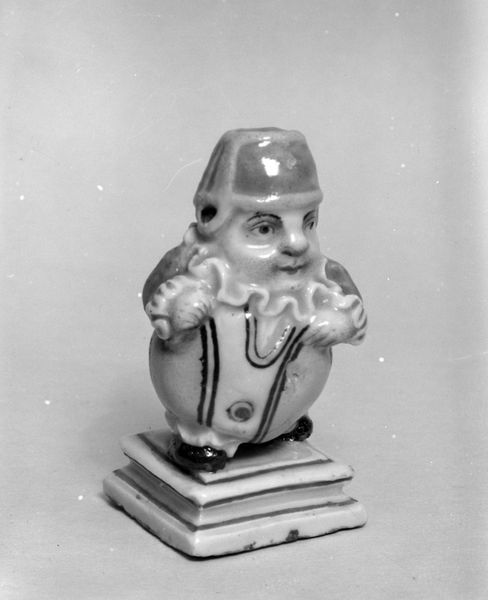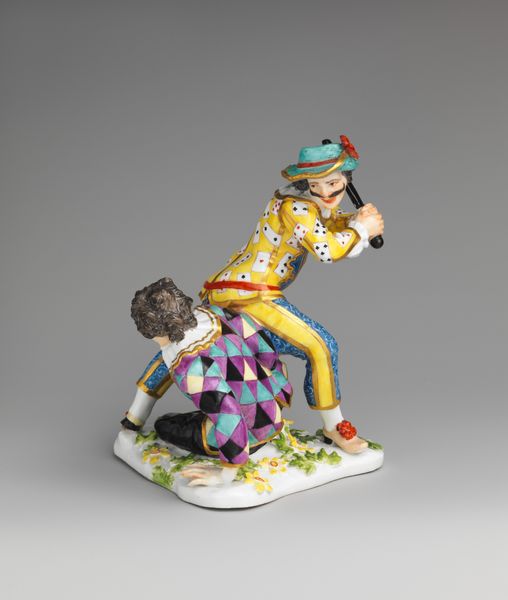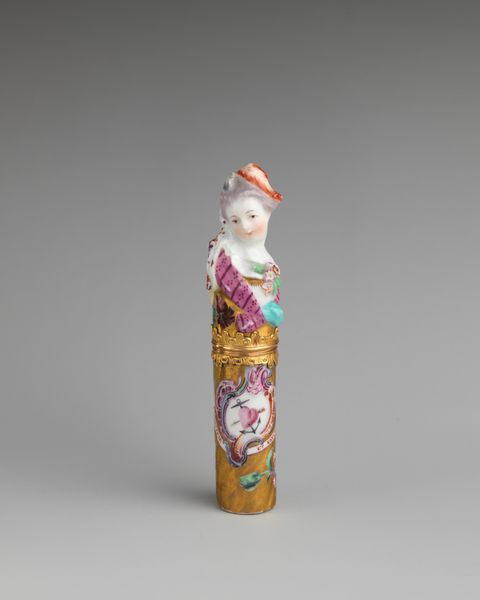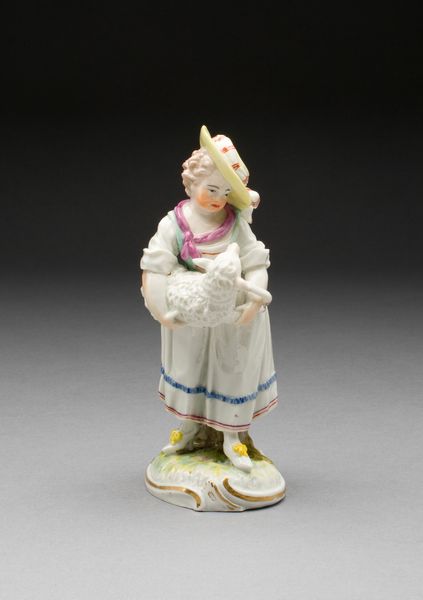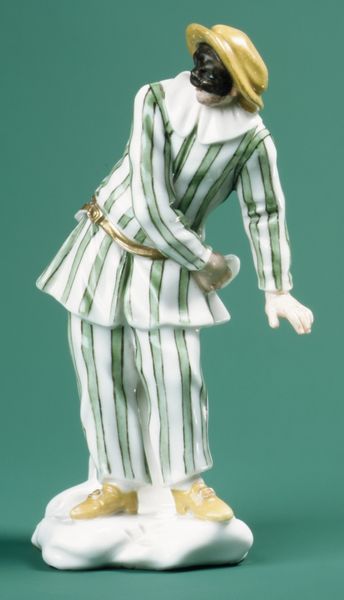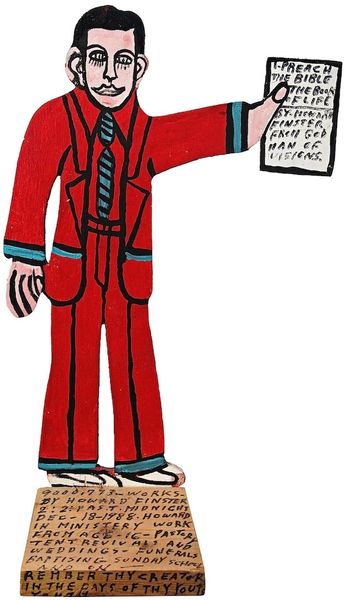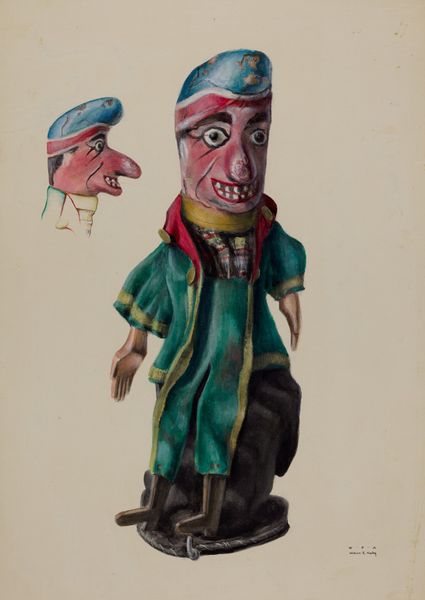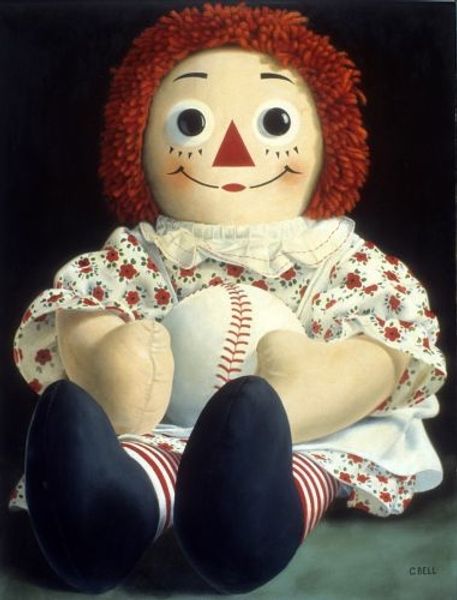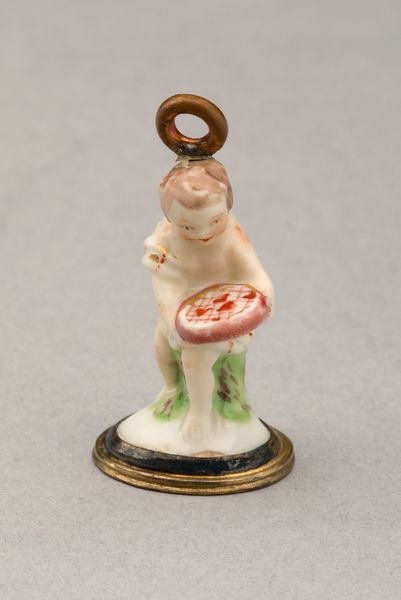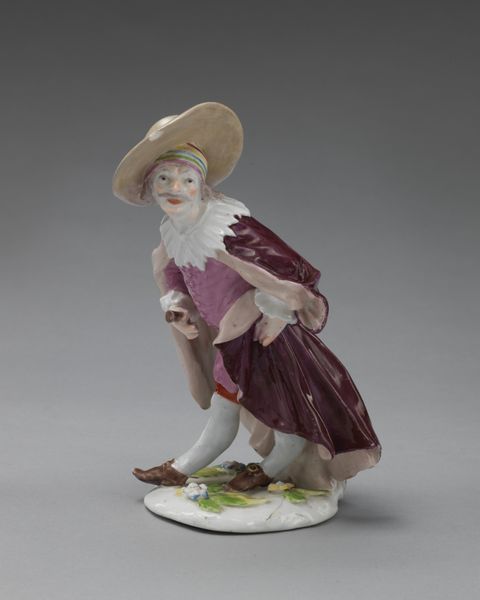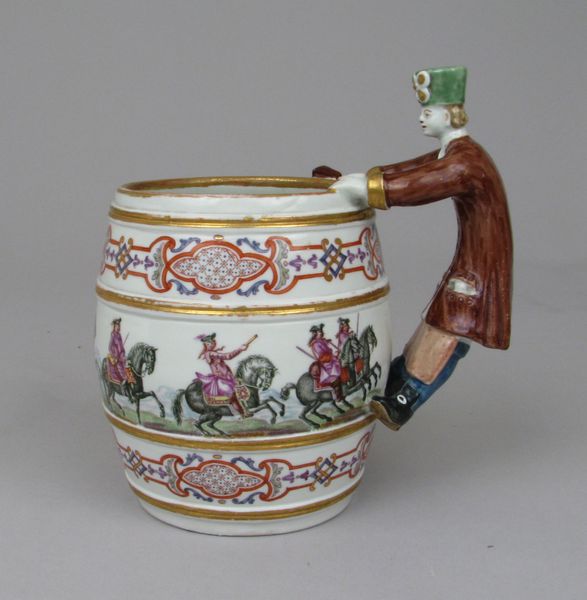
mixed-media, metal, glass
#
mixed-media
#
metal
#
figuration
#
glass
#
designed for kid
#
united-states
#
cartoon style
Dimensions: 4 x 2 3/8 x 2 3/8 in. (10.16 x 6.03 x 6.03 cm)
Copyright: No Known Copyright
Curator: Well, hello there! Standing before us is the "Buddy Bank" mechanical bank, crafted around the 1950s by Louis Marx & Company. It resides here at the Minneapolis Institute of Art. What strikes you about it? Editor: The visual effect is immediate: the sunny, almost aggressively cheerful, cartoon-like boy. There's something a little unnerving about that fixed smile combined with its obvious purpose—capitalism and the normalization of profit from childhood. Curator: Let's unpack that. Constructed with mixed media primarily including metal and glass, its mechanics are fascinating. You place a coin in Buddy’s hand, and then... Editor: ...then "Shake Buddy!" as it commands—his arm jiggles, depositing the coin in the jar. The very action links play and labor, doesn’t it? Teaching children to work for money, albeit in a miniaturized and entertaining form. Curator: Precisely! Marx was a master of understanding consumerism and toy production in particular. These weren't hand-crafted treasures but mass-produced objects available to a wide audience. The printed design on the tin lithography contributes to this sense of easy availability. Editor: That choice of tin lithography really places it firmly within a specific era of mass production and advertising aesthetics, doesn't it? How consumption has literally been made playful. Even the design cues feel politically motivated and propagandistic for its period in time. What's innocent childhood glee and what's social conditioning? Curator: These mechanical banks reflected post-war economic optimism in America. This one encourages kids to save, invest, and ultimately participate in the capitalist system. It serves a utilitarian purpose while reflecting broader cultural values of its time. Editor: The choice to design for kids reflects an explicit agenda; children are not neutral receivers, and teaching saving could also signal a broader ethos of discipline, deferred gratification and normalization of profit, race and power hierarchies for an American midcentury public. I do think though, that bringing focus to the way this playful design functions politically gives important clues as to what purpose art fulfills across historical time and how this resonates today. Curator: It does complicate nostalgia for that mid-century "innocence," certainly. Thinking about the materials—the pressed tin and glass—in relation to its purpose certainly changes how one considers such objects. Editor: Absolutely, by engaging with its history in an intersectional fashion, it encourages dialogue with broader perspectives across race, gender and class, revealing so much about American material and consumer culture.
Comments
No comments
Be the first to comment and join the conversation on the ultimate creative platform.
